Uluru is a stunning landmark in Australia’s Red Centre. This impressive rock rises 348 metres (1,142 ft) from the earth and has a circumference of 9.4 kilometres (5.8 mi).X Uluru, also known as Ayers Rock, is a site of great cultural significance to the Anangu people, the traditional owners of Uluru-Kata Tjuta National Park, and it’s a great destination for anyone interested in exploring the beauty and history of the Australian outback!
StepsPart 1Part 1 of 3:Planning Your Trip
1Visit Uluru between May and September. Australia’s hottest months are December, January, and February, with temperatures regularly climbing over 36 °C (97 °F). When the temperatures start to rise, some trails around Uluru may close early. Try to plan your visit during cooler weather so you can explore Uluru at your own pace.During June, July, and August, temperatures can drop down to the freezing mark at night, so be sure to pack warm clothes if you’ll be visiting then.The weather is usually temperate during May and September, with highs around 28 °C (82 °F) and lows around 8 °C (46 °F).X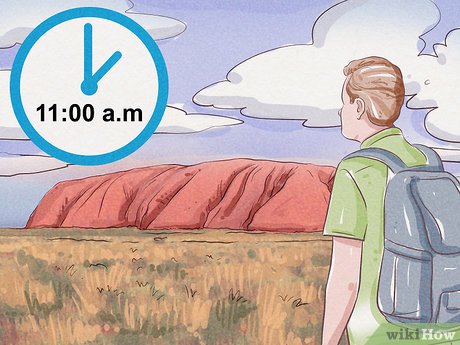
2Arrive at the park early if you visit during the hotter months. If you do visit Uluru during the summer months, plan to get to the park at around sunrise. Bring plenty of water, and plan to finish your walks by about 11:00 a.m. in hot weather.The sun usually rises at about 6:00 a.m. during the summer months.X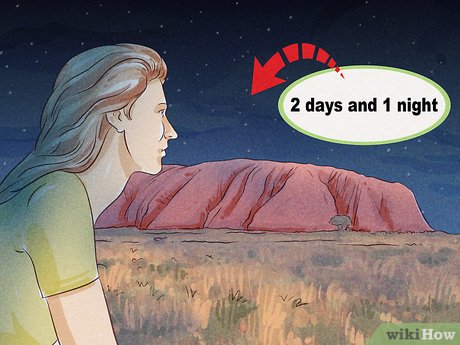
3Plan to stay at least 1 night. Unless you fly, traveling to Uluru can take hours. While the travel time is a part of the total experience, you won’t have much time for exploring if you’re planning a day trip. Get the most out of your experience by staying at least 2 days and 1 night, or 3 days and 2 nights if you want to explore other areas of the National Park, like the domes at Kata Tjuta.XOne of the most spectacular experiences at Uluru is watching the sunrise or sunset, so plan to be in the park for at least one of those times.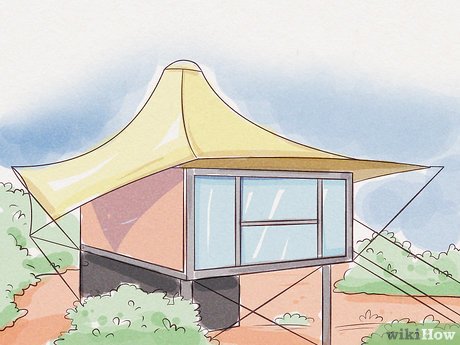
4Book your accommodations in nearby Yulara. The town of Yulara was built to provide a destination for travellers looking to experience the beauty of Uluru-Kata Tjuta National Park. Yulara offers a wide range of accommodations, from tent camping sites at Ayers Rock Campground to luxury hotels like Longitude 131 or Sails in the Desert.X5Get your passport 6-8 weeks in advance if you’re visiting from another country. If you don’t already have a passport, make sure you don’t put off getting one. It can take as long as 2 months to get a passport processed, so give yourself plenty of time.X6Apply for your visa before leaving your country. Your visa will be affixed to a page in your passport. Citizens of some countries, including the U.S., Canada, and Japan, can can apply electronically through the Electronic Travel Authority (ETA) by visiting https://www.eta.immi.gov.au/ETAS3/etas.For instructions on applying for an Australian visa based on the country where you live, visit https://www.homeaffairs.gov.au/trav/visa/appl/visitor#.Part 2Part 2 of 3:Getting to Uluru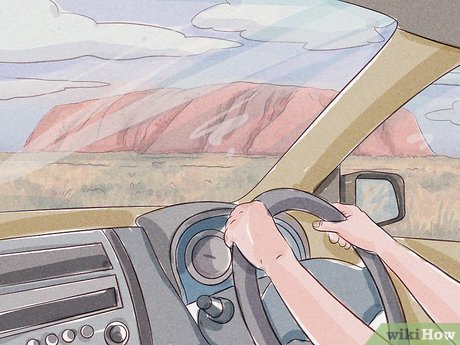
1Drive to Uluru for an amazing road trip. Uluru is 4.5 hours away from Alice Springs, the nearest major town, and it can take 2-3 days to travel from cities like Sydney or Melbourne. However, driving is a one-of-a-kind way to experience the Australian outback.XThe roads leading to Uluru are all paved and smooth, so you don’t need a 4-wheel drive vehicle to get there.To get the most out of your road trip, pack a cooler full of drinks and snacks so you don’t have to make as many stops. Bring along plenty of music, and plan a little extra time to stop and take pictures of the scenery.
2Take a bus from Alice Springs if you don’t want to drive. Enjoy the sights of nature while traveling to Uluru in an air-conditioned Greyhound bus. A bus is a great way to get the experience of seeing the outback without having to worry about making the drive yourself.XAlice Springs is the only place which offers Greyhound service to Uluru.Bus fares from Alice Springs to Uluru start at around $175 AUD, but you can also charter a bus tour which will include admission to the park and overnight accommodation. Charter buses start around $200 AUD.X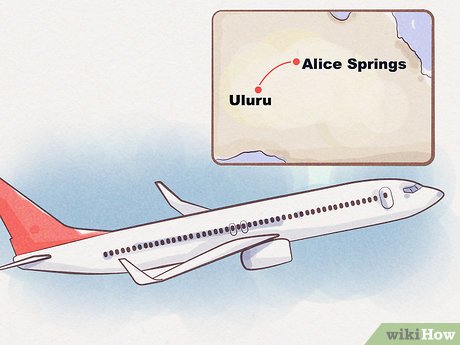
3Fly into Connellan Airport for the fastest route to Uluru. Connellan Airport, also known as Ayers Rock Airport, is only a 20-minute drive to Uluru. Connellan Airport is located in Yulara. It only has 1 terminal, so you won’t have to worry about large crowds or long lines.XYou can fly into Connellan Airport from any capital city in Australia except Canberra.If you’re flying into Australia from an international destination, you’ll probably want to fly into Sydney, then take a flight from Sydney to Connellan. A roundtrip ticket from Sydney to Connellan can cost anywhere from $500 AUD to over $1200 AUD, depending on how far in advance you book your flight.X
4Tour the area in a helicopter for an aerial view of Uluru. Board a helicopter in Yulara to see stunning views of Uluru, Kata Tjuta, and nearby Lake Amadeus.XHelicopter flights are provided by Professional Helicopter Services (PHS) and are available 365 days a year. Helicopter tours start at $95 AUD for an 8-minute trip and go up to a 35-minute sunset or sunrise tour for $320 AUD.Part 3Part 3 of 3:Seeing the Sights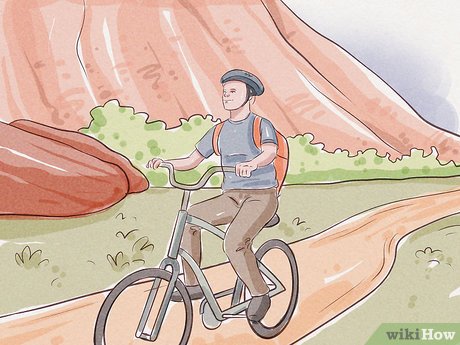
1Walk or bike around the base of Uluru. The base walk at Uluru might be the most iconic experience at the rock. The trek is 15 kilometres (9.3 mi) and will take about 3 hours. You can also bike around the base. If you don’t have a bike with you, you can rent one from the nearby mobile bike shop.Renting a bike is about $50 AUD for adults, $35 AUD for children ages 6-10, and $25 AUD for a tag-a-long bike for children ages 4-6. You can also rent a bike with a toddler seat for children ages 1-4 for an additional $20 AUD.X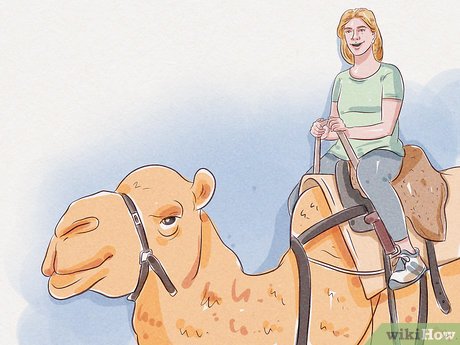
2Ride on a camel for a unique way to explore Uluru. Camels are built for a landscape like Uluru, so it’s no surprise that camel rides are a popular way to see the sights in the park.XA 45-minute camel tour of Uluru is about $80 AUD from Uluru Camel Tours. They recommend that you book your tour in advance.X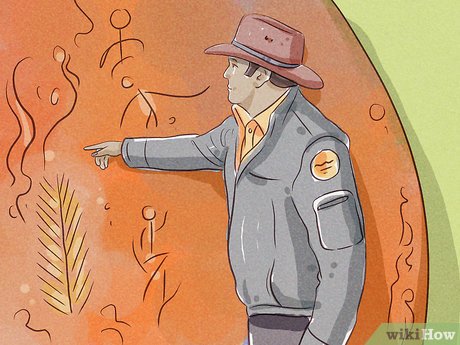
3Take a guided Mala walk. Each day, a ranger takes a group on a 2 km (1.2 mi) walk while telling the story of the traditional Anangu culture. This walk takes about 1.5 hours.To participate in the ranger-guided Mala walk, meet at the Mala carpark at the west side of the rock. Tours start at 8:00 a.m. between October and April and 10:00 a.m. from May to September.
4View the sunrise or sunset at one of the viewing areas. The Sunset Viewing Area is located at the northwest corner of Uluru. The other viewing area, Talinguru Nyakunytjaku, is located southeast of the rock.Be sure to get to the viewing area early to get a good spot for pictures, because it can get crowded. Sunset is an especially busy time at the park, so you may want to try to catch a sunrise to get the best spot.You can look online or check with the park staff or Ayers Rock Resort to get the exact sunrise and sunset times.X.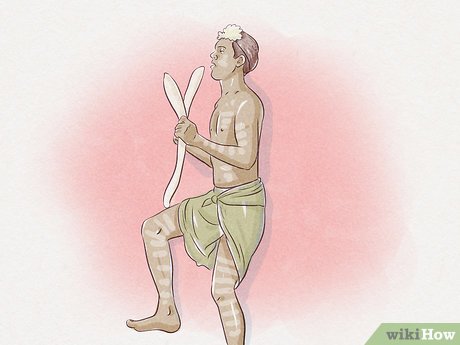
5Visit Ayers Rock Resort to see the Wakagetti Dance Troupe. The Wakagetti Dance Troupe puts on a performance which celebrates the culture of Australia’s indigenous Aboriginal people every afternoon at the resort. This performance is free to the public, so all you have to do is show up and enjoy the fun!X
6Try the Sounds of Silence experience for fine dining under the stars. Sounds of Silence is a 4-hour dining experience under the open sky. You’ll enjoy a 3-course buffet featuring native delicacies such as kangaroo and crocodile. As the sun sets, a local astronomy expert called a star talker will explain the sights of the night sky.XThe cost of this once-of-a-kind experience starts at $199 AUD for adults and $100 AUD for children.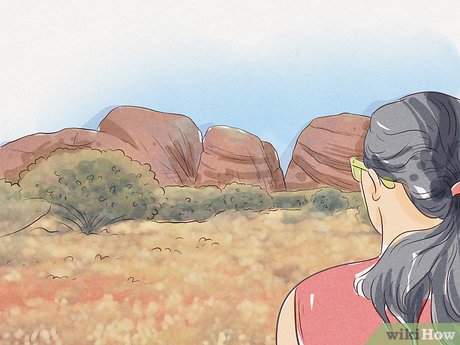
7Explore the domes at Kata Tjuta. The dunes at Kata Tjuta are another popular attraction. The dunes are located in the same park as Uluru, although they are about 55 kilometres (34 mi) apart. Plan a picnic, watch the sunset, or hike through the Valley of the Winds, a passageway through the dunes which always has a breeze blowing through it.It’s best to include a trip to Kata Tjuta if you’ll be visiting Uluru for more than one day.








